The distinctive numbing flavor of Sichuan peppers defines the region’s world-famous cuisine. So why are they so hard to find in America?
We don’t wear gloves or anything when we pick them, because you can’t get to them that way,” says Mrs. Di, an elderly farmer, as she shows us the prickly sharp thorns surrounding the bright-red berry clusters on her Sichuan pepper trees. “It shreds my hands when we harvest.”
Di is a good-natured grandma in a wide-brimmed, flower-bedecked straw hat; so kind that she’s welcomed a small group of nosy unannounced visitors who asked to tour her small farm. It’s painful to think of her picking peppers until her hands bleed so that those who love Sichuan cuisine can savor the world’s most electric spice.
One of the first things you learn on a visit to Hanyuan—a county 150 miles southwest of the Sichuan provincial capital of Chengdu that has long been known as the home of the world’s best Sichuan peppers—is just how difficult and time-consuming it is to pick and process the peppercorns.

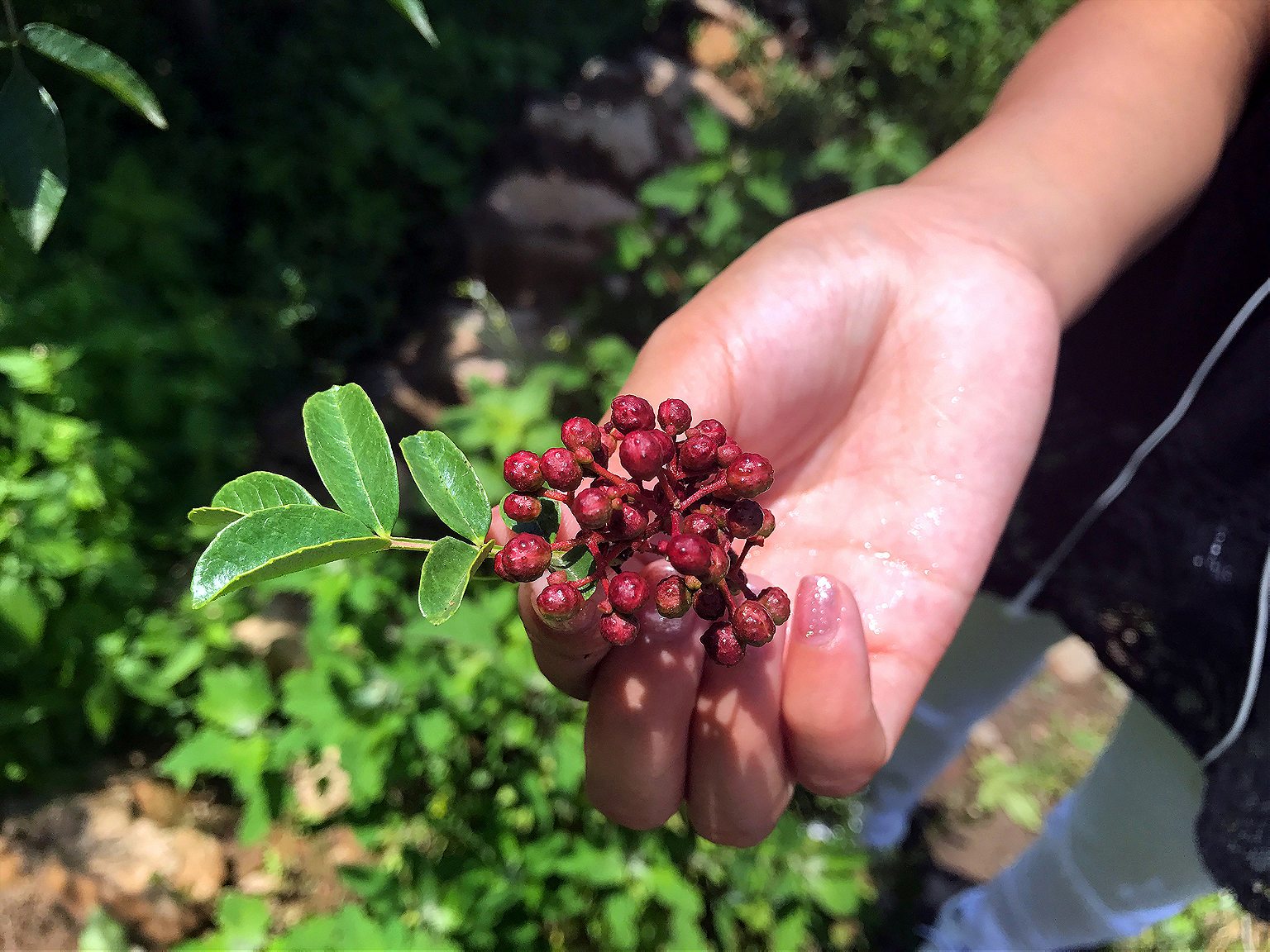
But that’s not why the spice has been maligned, and even banned, for the past 50 years in the United States. Even as Sichuanese food has grown in popularity in the U.S, the cuisine’s defining ingredient has been charged with being variously numbing, diseased, and ruinously heat-treated. Those charges are mostly unwarranted, but the bad rap has made the rise of Sichuan’s defining spice as an American cult favorite a radical triumph.
Even more than other spices, endowed by evolution with defensive odors and tastes, Sichuan pepper seems designed not to be eaten. Once you get past the thorns, the taste of a fresh or freshly dried berry leaves your mouth, tongue, and lips buzzing and numb for several minutes. It is literally electric: The active ingredient, sanshool, causes a vibration on the lips measured at 50 hertz, the same frequency as the power grid in most parts of the world, according to a 2013 study at University College London.
In late June, the Sichuan pepper harvest in Qingxi, the Hanyuan town at the heart of pepper production, was still at least a couple months away, generally “during the seventh lunar month,” according to Di. But the berries getting direct sun are already plump and red and releasing some very potent, intensely numbing oil once you bite into them or squeeze the little bumps covering the surface of the peppercorns. After the berry clumps are painstakingly harvested, the farmers sell them to a processor who dries them until the little pods open, releasing their unpleasantly brittle black seeds, at which point their shape resembles a flower, earning them the name hua jiao, or flower pepper, in Sichuan dialect.
The best hua jiao are fully open with few seeds or stray twigs, and certainly no thorns—though some have been known to sneak through in lower-quality product, which is one reason premium peppercorns are not only picked but also cleaned and sorted by hand. They deliver not only the tingly sensation prized in Sichuan food, often paired as a one-two punch with chili peppers, but also a strong citrusy perfume and taste that adds intrigue to the heat. Outsiders think of Sichuan food as spicy hot, or la, but the more prevalent and unique characteristic of the cuisine is ma, the citrus tingle of Sichuan pepper. The combination of the two, mala, is what we typically think of as Sichuan flavor.
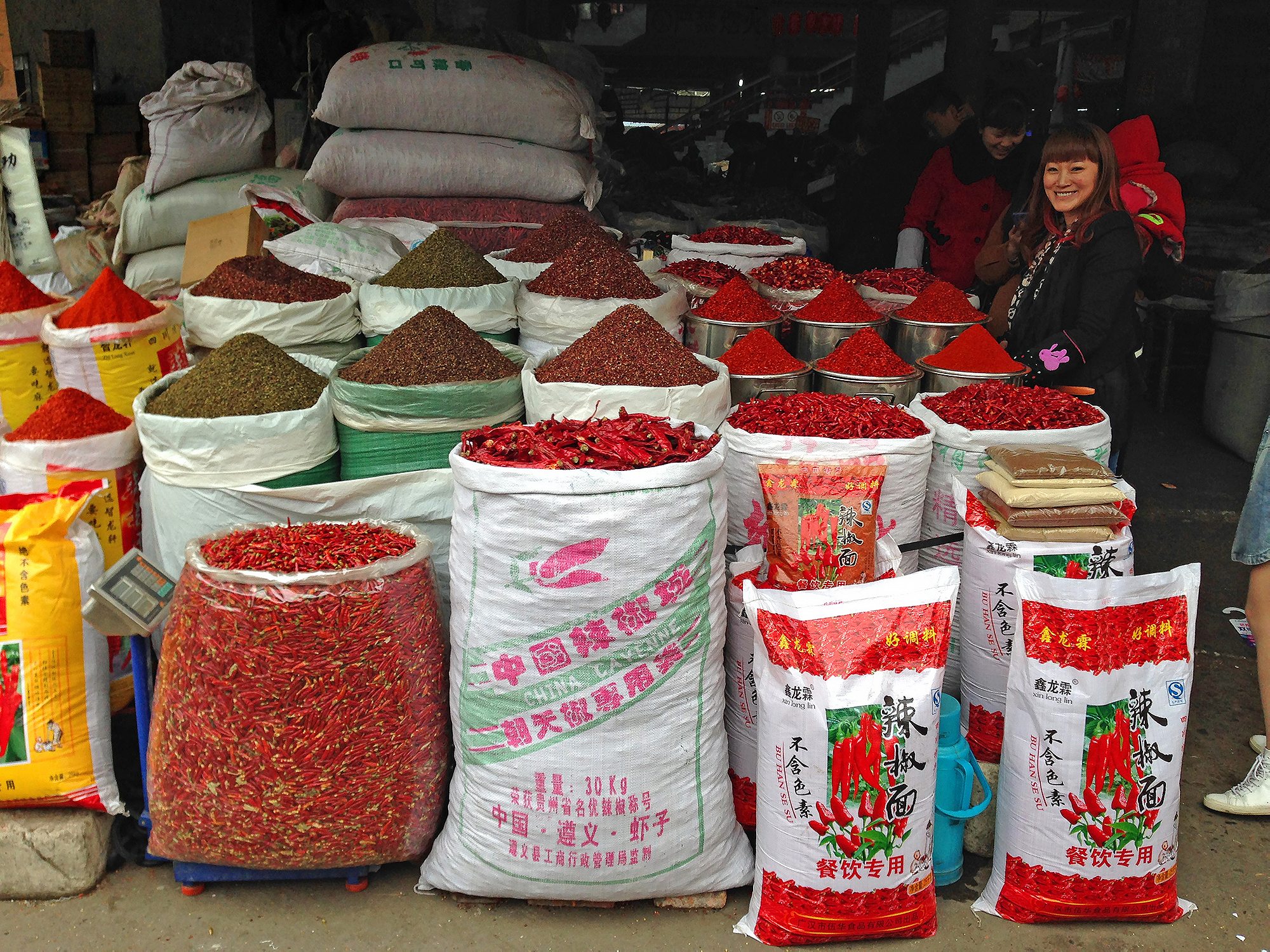
Ask a spice merchant at Wukuaishi, the giant wholesale spice market in a down-market area of north Chengdu, where their Sichuan pepper is from, and they’ll say Gansu or maybe Shaanxi, mountainous provinces just north of Sichuan. Several northern provinces grow da hong pao, the marketing name for a larger, redder, flashier species than what’s grown in Hanyuan. If it’s green Sichuan pepper, qing hua jiao, a species that has a fresher, more vegetal taste that goes well with fish and has become very popular in Sichuan over the past couple decades, they’ll say the best comes from Yunnan, to the south, since it grows in a warmer clime.
The merchants all have some Hanyuan peppers as well, but it typically costs less than that from Gansu. If they were able to get their hands on any hua jiao from Qingxi—which is unlikely considering the small supply and high demand—it is long gone by the summer, with only one Sichuan pepper harvest a year.
If you’re nice, one of the merchants might sell you as little as a kilo of Sichuan peppers or the dozens of varieties of dried chili peppers, chili powders, and other spices that are like catnip to heat lovers. But if you’re looking to buy wholesale, as I was, that’s not much. At Wukauishi, if you’re American, you are out of luck thanks to our country’s tortured relationship with Sichuan pepper.
It all began in 1968, when the United States Department of Agriculture instituted a blanket ban on citrus from China as possible carriers of citrus canker, a highly contagious bacterial disease that decimates citrus trees (but does not affect humans). The ban included Sichuan pepper, since the Zanthoxylum genus and its numerous edible species of Sichuan pepper are not actually in the pepper family but are a form of citrus. It was thought at the time that not just citrus seedlings or fresh fruit but also the dried seed pod of Sichuan pepper could spread citrus canker.
The ban was little-enforced until 2002. At that time, according to a USDA spokesperson in a 2004 New York Times article, the field manual for inspectors was updated and contraband hua jiao was prioritized. Spice shops and, particularly, ethnic markets were targeted for “interdiction,” as the agency calls it. That meant inspectors not only cracked down at the ports on incoming shipments from China, they cruised the aisles of Asian grocery stores looking for the little numbing spice and yanked it from the shelves.
While Sichuan pepper could still be sourced in the U.S. if you had connections or luck, the Sichuan restaurateurs the Times talked to were worried, and with good reason. “The Economics of Agricultural and Wildlife Smuggling,” a 2009 USDA report published after the ban looked at smuggling to the U.S. from 2002 to 2006. It found that China was by far the worst offender for plant products as measured by interdictions, or confiscations (which were larger and more easily tracked than import refusals), and that Sichuan pepper was by far the most-confiscated product: 338 interdictions, weighing 801,332 pounds and valued at $1.2 million. Even including interdictions from other Asian countries and Mexico, Sichuan pepper topped the list as the most-confiscated agricultural product during that period.
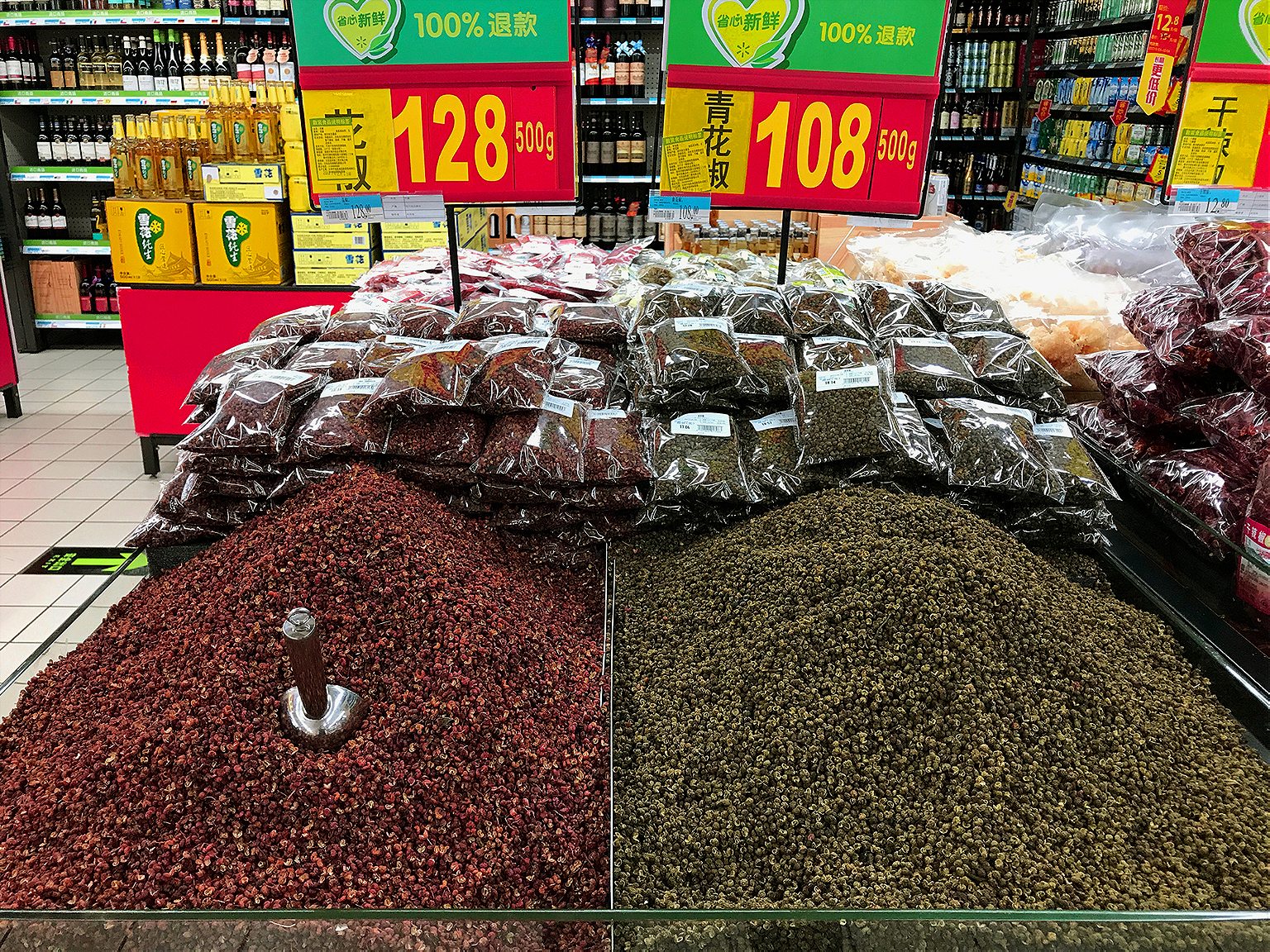
At the same time as the ban, immigration from mainland China to the U.S. was exploding. Fifty-six percent of the current Chinese immigrant population has entered the country since 2000, according to the Migration Policy Institute. Those new American residents were looking for a taste of home, and Chinese markets proliferated to serve them. Those who loved and missed Sichuan food clearly would not be denied their hua jiao, making smuggling worth the risk. As a Times source said in the 2004 article, “people basically took a lot of trouble transporting them to India and then Mexico and then into the U.S.”
The USDA finally dropped the ban on Sichuan pepper in 2005 with the caveat that it must be heated to “140 degrees Fahrenheit or above for 10 minutes or longer” before importation in order to kill any citrus canker bacteria that might be present. But that decree only added injury to insult. No other spice has to undergo this heat treatment, which darkens the peppercorn and, it is widely believed, diminishes the oil content, potency, aroma, and flavor.
The required heat treatment added another level of regulation, processing, and paperwork for Sichuan pepper exporters. It is already a daunting process for family farmers like the Dis with premium product who might want to directly export their Sichuan peppers, according to Jordan Porter, a Canadian who runs Chengdu Food Tours, a successful culinary tourism business. “The challenges in receiving certification [on the Chinese side] make it not worth it for small farms to get export licenses,” he says. The added burden of the U.S. heat-treatment certification makes it even less likely farmers will pursue exporting since the vast majority of market demand is in China anyway, where heat treatment is not required.
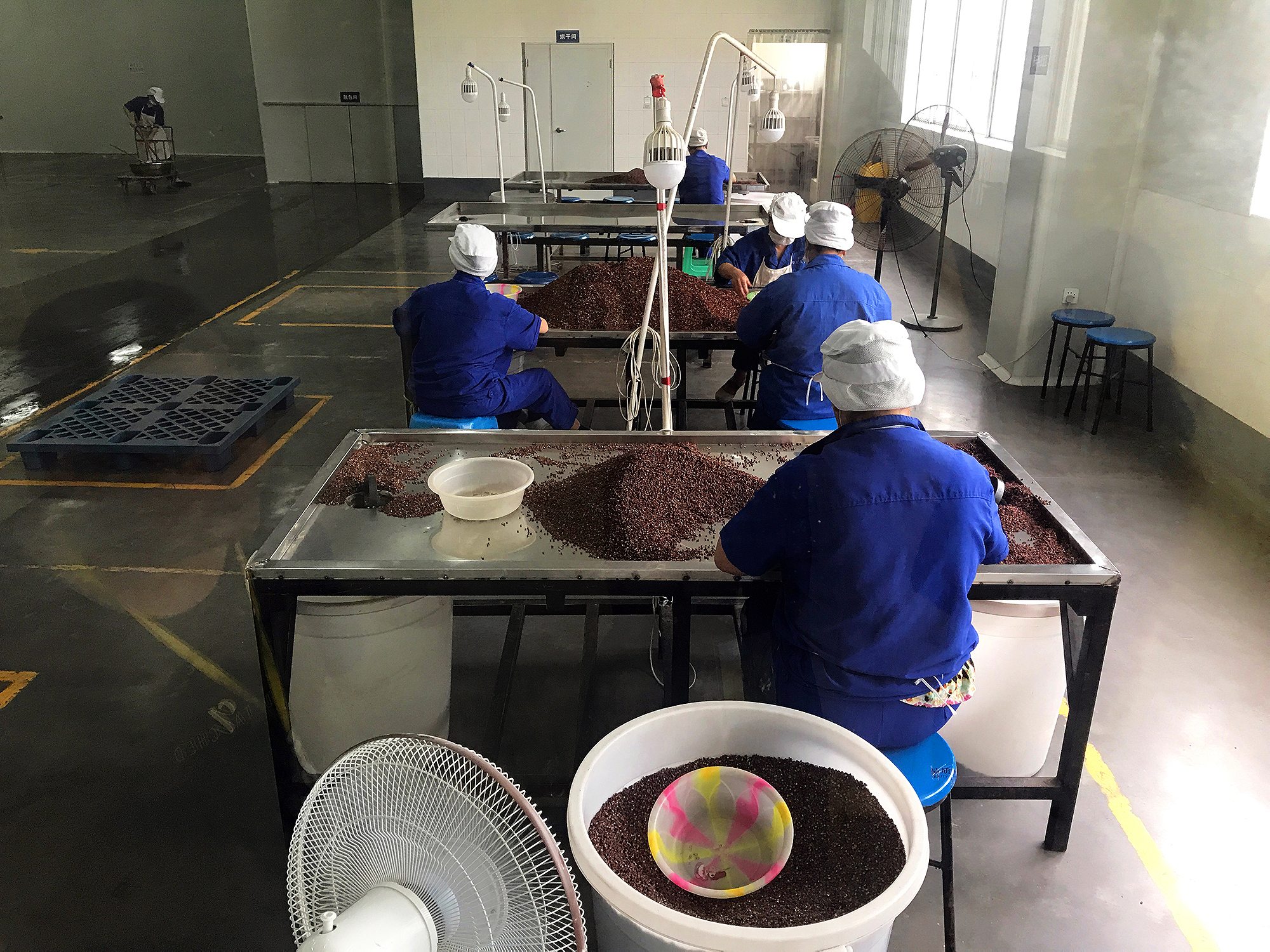
That explains why Wukauishi merchants don’t sell to Americans. Only a large manufacturer with an extensive product line and global ambitions would go to the expense and trouble. One such company is Youjia Food. In my effort to follow the trail of Sichuan pepper from farm to American table, I visited the Youjia factory in Dayi County (part of greater Chengdu) and spent a day with its owners.
Fortysomething husband and wife Lu Qingfeng and Zhang Ping both grew up in Hanyuan in hua jiao-farming families. The family land allowed the company they founded in 1999 to become a major player in Sichuan pepper and Sichuan pepper oil, and they then expanded into other spices, sauces, and pickles. Their orange packaging can be found in all major supermarkets in China as well as global locales including Japan, Canada, and the eastern U.S. It could even be found as an “official condiment” of the 2008 Beijing Olympics.
Youjia (packaged as Youjoy in the U.S.) prices are a bit higher than other supermarket brands. That is partly because their Sichuan pepper and Sichuan pepper oil are certified by the government as Green Food, which signifies in China that, while not fully organic, they are pollution-free, safe, and sustainable. Lu and Zhang believe in the higher value of their hua jiao, which goes directly from their farm to their factory and out the door to the consumer under their oversight.
The Youjia factory is large and clean with a production building for each product category. My translator and I are not allowed inside most production areas (trade secrets!), but they do allow us to watch through a glass window as five or so middle-aged women, their hair and mouths covered, hunch over tables piled high with red peppercorns, cleaning and sorting them by hand, one by one. Green Sichuan peppers had just been harvested, which is when the fresh (not dried) berries are infused in hot oil to make a version of the spice that carries the taste and tingle without the pesky husk or powder. The smell emanating from the pepper oil building is most enjoyable.
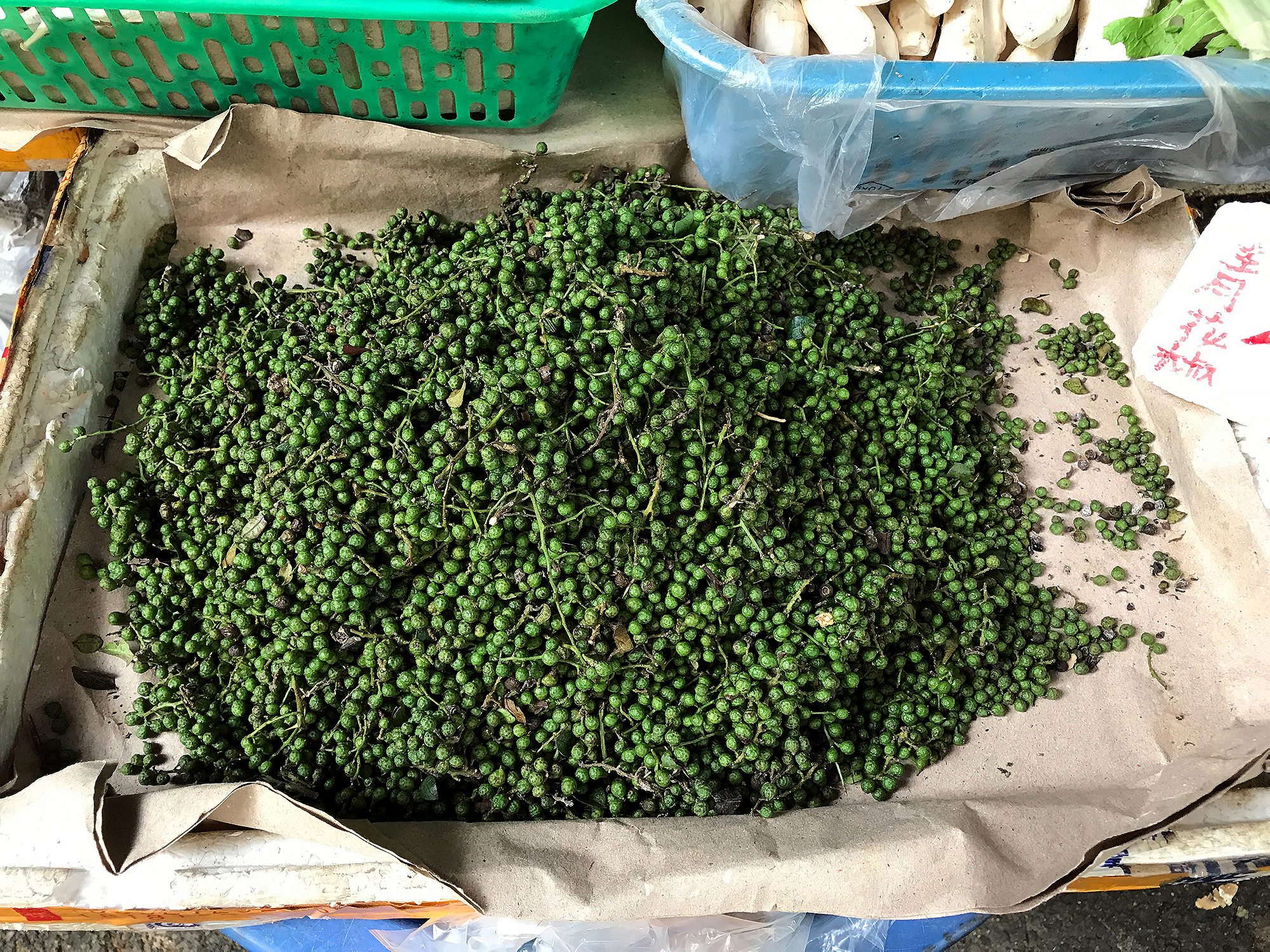
Lu explains that Youjia—and all larger companies—no longer sun-dry Sichuan pepper, a process that is hard to control and can expose it to contaminants. Nowadays, hua jiao is dried in large dehydrators that extract moisture while retaining maximum oil content. Youjia turns the heat up during this process to the 140 degrees Fahrenheit required by the USDA on all its peppercorns, he says, whether they are headed to the U.S. or the local Chinese market. Another large company told me they electrically dehydrate all their Sichuan pepper but heat it to the higher 140 degrees only for the U.S. market.
The irony in all this is that sometime after the ban ended in 2005, the USDA import manual changed again. With no fanfare, the inspection manual now says Sichuan pepper does not need to be heat-treated. The May 2017 edition I consulted in the depths of the USDA’s website instructs agents to “inspect and release” “whole Szechwan peppercorn” from China even if there is no “documentation present showing the product was heated.” Footnote 7 to the instructional flowchart is the clincher: “Szechwan peppercorns, because they are used in cooking or as medicine and because they may be roasted prior to grinding, pose negligible risk.”
Sichuan pepper was banned outright for 37 years
Sichuan pepper was banned outright for 37 years, then forced to endure unnecessary heat treatment for a dozen more—making it difficult for kung pao chicken, mapo doufu, and other Sichuan classics to wield their full numbing power for nearly 50 years in the U.S. And this whole time, there was “negligible risk”?
Looking at the import manual and its many footnotes on Sichuan pepper inspections, U.S. Animal and Plant Health Inspection Service spokesperson Claudia Ferguson said it appeared to her that “in the past, it was over-regulated”—also stressing that regulations are based on the science at the time. She surmised that someone pushed back, causing APHIS to reassess its risk. They realized that people cook the whole peppercorns or roast them before they grind them, either way applying heat that would kill the canker bacteria. “You don’t put it in your backyard,” she said, “You put it in your soup.”
The final irony of it all is that while canker-infected Sichuan pepper trees are indeed a problem in northern China, according to a 2016 USDA report, Sichuan pepper canker is a completely different animal than the citrus canker. “Citrus canker is caused by a bacterium whereas canker disease of Sichuan pepper is caused by two closely related species of the fungus Fusarium,” wrote study author Kerry O’Donnell via email. “So these two canker diseases are unrelated.”
I explain this game-changing turn of events to one manufacturer in Sichuan, but he hasn’t heard it elsewhere and clearly isn’t believing it. He pulls up on his mobile phone the certificate his factory produces for U.S. export, verifying that they have heated the spice to 140 degrees Fahrenheit. I finally give up trying to spread the good news. After a dozen years of jumping through this hoop for the American market, it could take many more before producers actually drop the procedure.
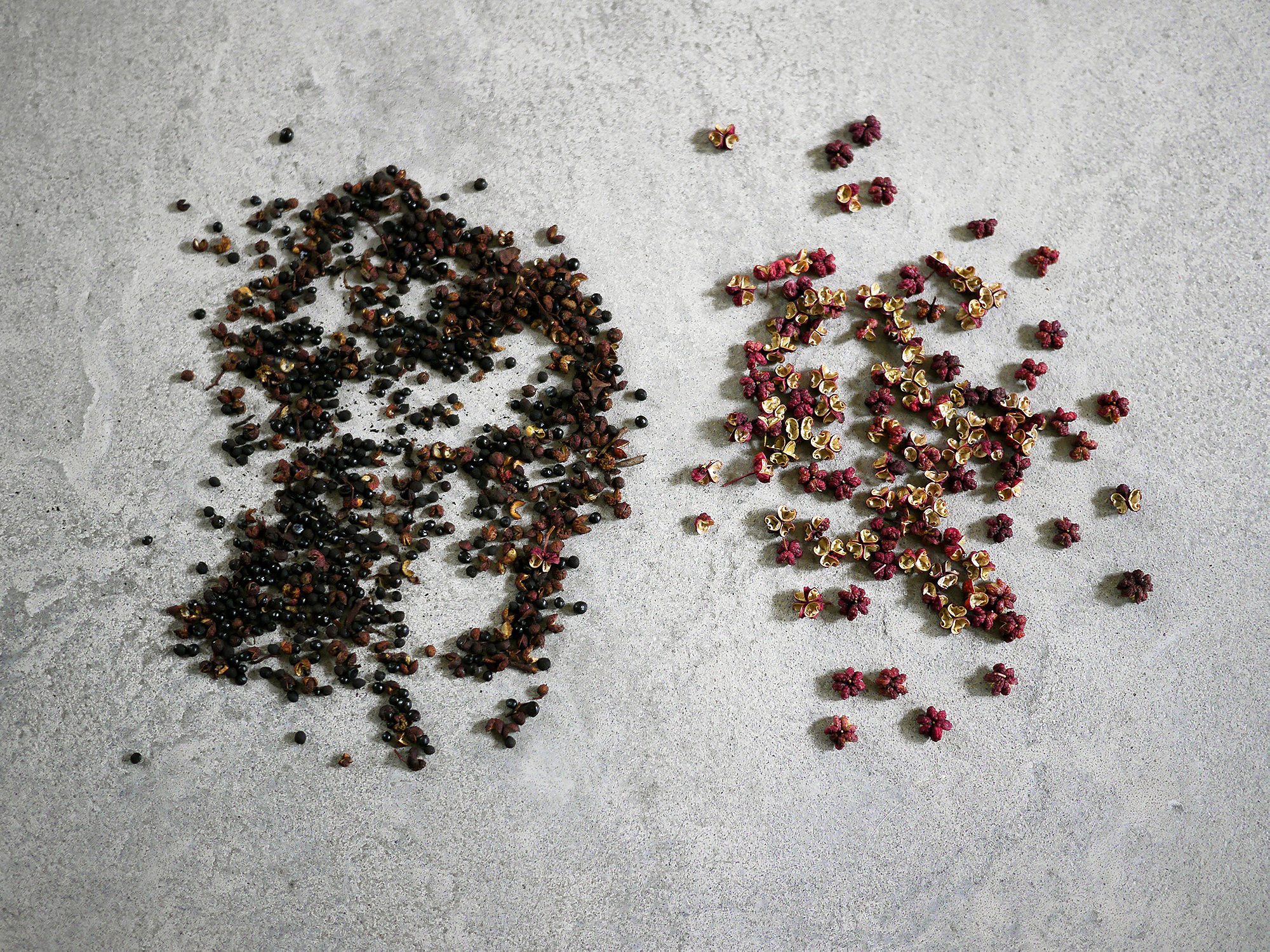
But Youjia’s statement that it heat-treats even for the China market, combined with the memory of intense mala coming out of U.S. Sichuan restaurants using heat-treated hua jiao (some may smuggle in untreated hua jiao from China, but the big restaurants use legal import channels) got me thinking. How bad could this heat treatment be? There’s no denying that most Sichuan peppercorn in Asian supermarkets in the U.S. is dreadful—faded and brown, filled with seeds and stems, emitting a chemical odor and wielding little numbing power. But is heat treatment actually the cause?
I wasn’t so sure, so I gather up all the hua jiao I had accumulated over a month in Chengdu: species including those from Hanyuan as well as da hong pao and green hua jiao; bought in Qingxi, at Chengdu farmers markets, the wholesale spice market, Chinese supermarkets, and direct from manufacturers; heat-treated for export and untreated. Then I convene a panel of experts at a Chengdu brewpub for a blind taste test. Porter, of Chengdu Food Tours, pops (and chews!) a few hua jiao a day while taking visitors on market tours. His business partner, Anita Lai, is a local whose family owns a chain of mala hotpot restaurants. Chengdu resident Justin Hoke recently got a Ph.D. in music at Harvard but spends all his time researching the contrast between modern and ancient Chinese cookery.
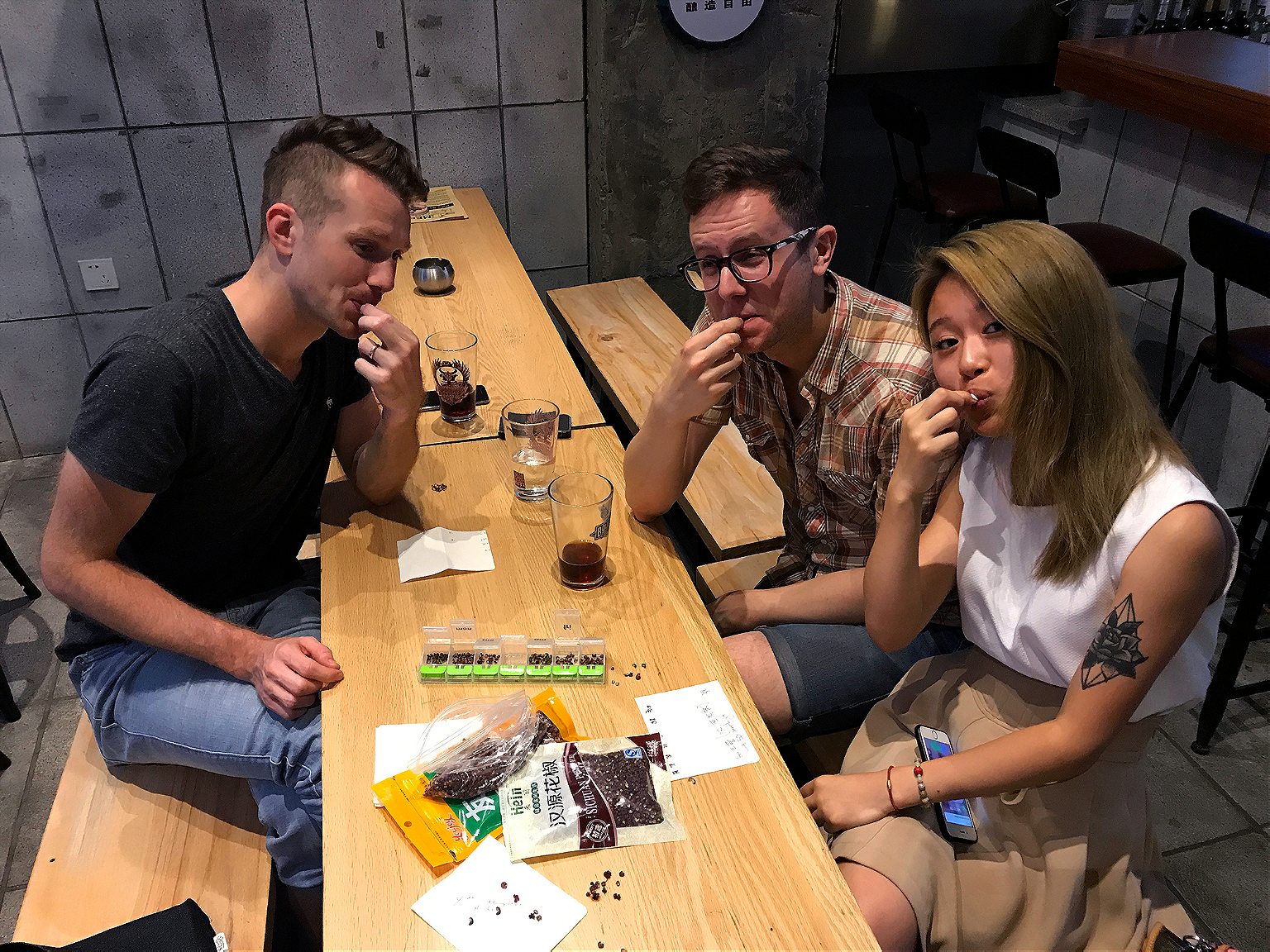
This is an opinionated bunch. And let’s just say, there is little consensus other than that we all particularly love green Sichuan pepper because it is so bright and vegetal. On the red side, we are looking for both big flavor and potent numbing. Half of us go for a Hanyuan, which has a strong citrus aroma but is more woody and musky, while also being smaller and darker red-purple. “A Sichuanese grandma would want to cook with this one,” says Hoke. And half went for a da hong pao, which is big, brash, and bright red because, well, looks matter. Also, “you want to taste it in the nose, body, then tail. It’s one of the only ones that hit me in all sections,” says Porter of one of the da hong pao.
What we all agree on is that there is little discernable difference between those Sichuan peppercorns that had been heat-treated for export and those that hadn’t. If anything, the heat-treated ones won the blind taste-testing. Of course, this IPA-fueled tasting was far from scientific, but nonetheless, we all felt confident in saying that heat is not the culprit in bad U.S. hua jiao.
So, there’s no excuse for the inferior, lowest-priced product, packaged years ago, sitting on U.S. shelves besmirching Sichuan pepper’s good name.
